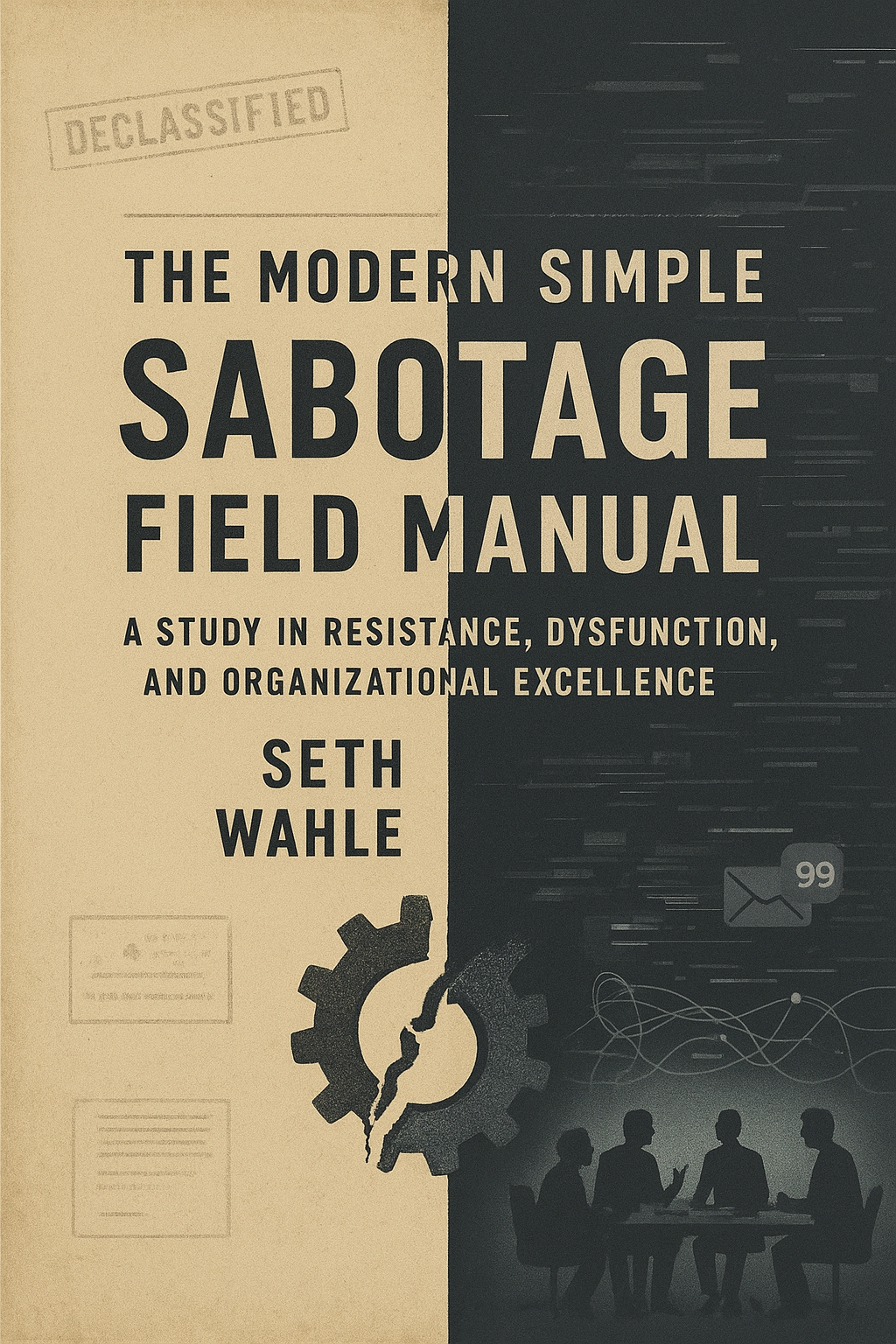Wahle-Tec
(Paper Back) THE MODERN SIMPLE SABOTAGE FIELD MANUAL: A Study in Resistance, Dysfunction, and Organizational Excellence
(Paper Back) THE MODERN SIMPLE SABOTAGE FIELD MANUAL: A Study in Resistance, Dysfunction, and Organizational Excellence
Couldn't load pickup availability
In 1944, the OSS created a field manual teaching ordinary citizens how to disrupt enemy operations through simple, untraceable acts. When declassified in 2008, business consultants made a startling discovery: these "sabotage" techniques perfectly described toxic workplace behaviors.
PART I: The Complete 1944 OSS Manual
The full, unredacted historical document that guided WWII resistance:
- Disrupting production, transportation, and infrastructure
- The infamous "organizational sabotage" section—paralyzing bureaucracies through meetings and committees
- Techniques for lowering morale and creating confusion
- Safety measures and plausible deniability
PART II: Modern Applications
SECTION A: Contemporary Resistance Theory How would simple sabotage work today? Updates OSS principles for digital infrastructure, automated systems, mass transit, government services, and surveillance-era security.
SECTION B: Organizational Dysfunction How these same behaviors naturally emerge in dysfunctional workplaces. If these patterns describe your organization, you don't have saboteurs—you have systemic problems.
Includes:
- Psychology of disengagement and learned helplessness
- Diagnostic checklists for organizational health
- How toxic leadership creates sabotage-like behaviors
- Building the inverse: excellence by design
- Prevention strategies and cultural transformation
The Key Insight
The OSS didn't invent these behaviors—they documented patterns that already existed. Whether deployed intentionally or emerging naturally from poor management, the same behaviors create the same friction.
Who Should Read This
- Leaders diagnosing organizational dysfunction
- Consultants seeking assessment frameworks
- HR professionals addressing cultural toxicity
- Resistance scholars studying non-violent tactics
- Historians interested in WWII intelligence
- Anyone who thinks "my workplace feels sabotaged"
What's Inside
- Full 1944 OSS manual transcription
- Modern resistance theory for digital age
- Organizational diagnostic tools
- Psychology of dysfunction
- Sabotage vs. excellence comparisons
- Prevention strategies
From the Book
"The behaviors that once disrupted Nazi operations now naturally emerge in dysfunctional workplaces. This reflects fundamental truths about human nature and systems."
"Every person makes small choices. These compound. They become culture. They determine outcomes."
Three Lenses:
Historical: How WWII resistance disrupted enemy operations Contemporary: How principles apply to modern systems Organizational: How patterns emerge in toxic workplaces—and how to prevent them
Whether building organizations, studying resistance, or understanding systems, this book reveals timeless patterns of success and failure. The same behaviors that disrupt hostile systems also emerge when leadership fails or culture turns toxic.
Use it as a diagnostic tool to identify dysfunction early, design resilient systems, and build cultures of excellence.
The patterns are universal. The application is your choice.
Perfect for executives diagnosing problems, consultants assessing organizations, scholars studying resistance, and anyone seeking to understand why organizations fail despite talented people.
Share


